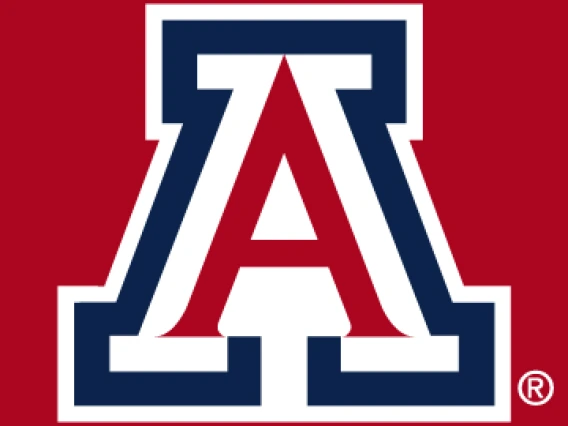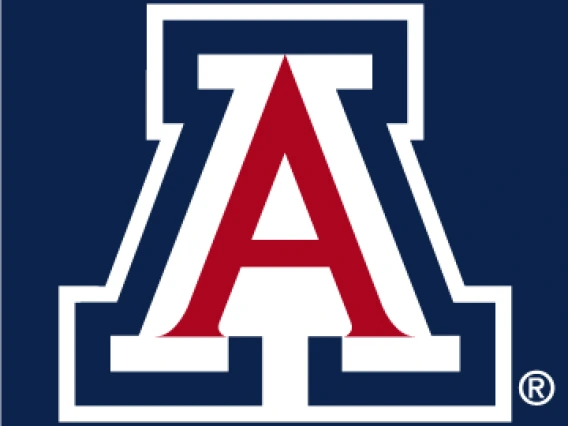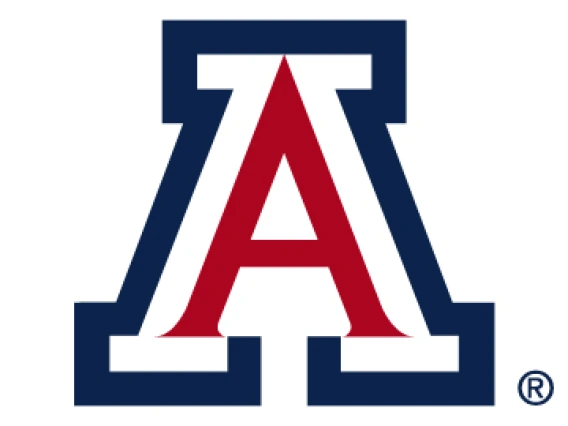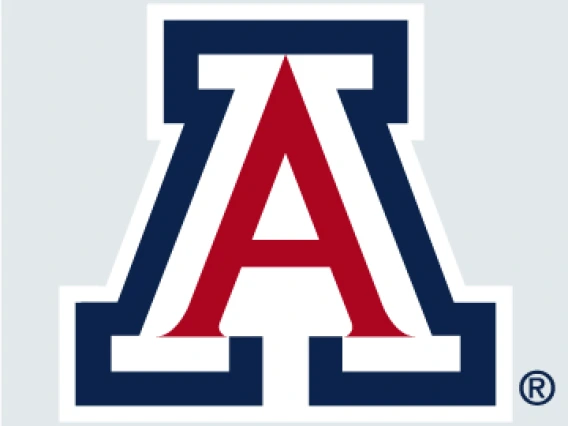Social Media
On our social media, we love engaging with past, current and future Wildcats and sharing all of our amazing activities, personalities, research and more!
Requirements for UArizona Social Accounts
Social Handles
Your unit’s profile name should be search-friendly and follow the naming convention of “uofa” or “arizona” combined with your unit name. Please reach out to brand@arizona.edu for approval on all new social media handles.
Profile Images
Take advantage of the social media platforms' most used and powerful feature: the news feed. This is where 99% of audiences see your posts so your profile image should be simple, clear and recognizable at this size.
We have created a library of “Block A” social profile images that can be downloaded from the Digital Asset Library (NetID required):
- Formatted for: Facebook, X (formerly Twitter), Instagram, and YouTube
- Categorized by color: Arizona Red, Arizona Blue, White and Light River

Arizona Red

Arizona Blue

Arizona White

Cool Grey
Social Media Management
Working in conjunction with our Trellis partners, social media managers are able to share and amplify quality content to larger, more engaged audiences.
Marketers will have one tool to connect with audiences across all social media platforms, as well as monitor and track their campaigns for real-time performance analysis. They will also be able to establish social listening dashboards which allow them to see what's being said online, across multiple verticals, about key departments and stakeholders.
Sprout Social
Social media accounts speaking on behalf of the University of Arizona that meet the below requirements are eligible for access to the University-wide social media software, Sprout Social.
Eligible accounts must:
- Have completed a social strategy worksheet
- Post a minimum of 3X per week on each account connected
- Actively utilize Sprout Social for scheduling and analytics, with no more than one month lapse
- Attend all required trainings
Social Media Strategy
Social media is a strategic tool for communications when aligned with your overall communications strategy. To help streamline new accounts, a Social Media Strategy Worksheet must be completed before requesting a new account.
Already have a social media presence? Use the worksheet to help provide your social media team with clear goals and benchmarks, and to assess account growth and opportunities for improvement in the future.
Worksheet Glossary
- KPI: key performance indicator; set of quantifiable measurements used to gauge the university’s overall long-term performance
- Objective: tangible actions or implementation steps needed to achieve the goal
- Tactic: action steps required to complete the objective
Best Practices for Social
Facebook’s terms change often. While we do our best to update you, it is your responsibility to follow their rules. Find the most recent version of the terms online.
Audience: Your audience on Facebook is the most diverse of all social media platforms. Followers will be of any age and any gender, race, or ethnicity. Data shows that the most active age group of Facebook users is 25–34 years old.
Posting frequency: A minimum of three posts per week is suggested. Posting regularly ensures that you are appearing in followers’ timelines. Lack of posting drives your pages’ presence within the algorithm down. Avoid posting multiple times a day to avoid competition among posts.
Community management: Respond to all relevant/non-spam direct messages, comments, or tags within a 24-hour period during the work week.
Optimal image sizes: Images that are not optimized for the web can show up cropped or pixelated:
- Profile photo – 180x180 pixels
- Cover photo – 820x462 pixels
- Photos or graphics – 1200x630 pixels
Best practices
- Avoid text-heavy graphics.
- Keep your text as short as possible. Posts between 40 and 80 characters perform best.
- Utilize your website, and link to it if needed; however, posts without a link will generally reach more people.
- When sharing university-wide updates or information, share the post made by the original source instead of creating a competing post.
X's, formally Twitter's, terms change often. While we do our best to update you, it is your responsibility to follow their rules. Find the most recent version of the terms online.
Audience: Your audience on X is much younger than on Facebook; the majority of X users are between 18 and 29 years old.
Posting frequency: A minimum of five posts per week is suggested. Retweets do count as content, as they show engagement on the platform.
Community management: Responding to all relevant/non-spam direct messages, comments, or tags is recommended within a 24-hour period during the work week.
Optimal image sizes: Images that are not optimized for the web can show up cropped or pixelated:
- Profile photo – 400x400 pixels
- Cover photo – 1500x500 pixels
- Photos or graphics – 1024x512 pixels
Best practices
- Use one to three hashtags to avoid cluttering your tweet.
- Schedule content directly before or after the hour to increase engagement (ex: 7:03am).
- Add alternative text when sharing graphics. Alternative text is used by screen readers to help the visually impaired better understand an image.
- Do not overuse emojis, as they are difficult to render using screen-reading devices.
- Visuals are the best way to engage your audience.
- Keep your text as short as possible. Posts between 71 and 100 characters perform best.
Instagram's terms change often. While we do our best to update you, it is your responsibility to follow their rules. Find the most recent version of the terms online.
Audience: Your audience on Instagram is very young, with the majority of users falling between ages 13–35.
Posting frequency: Share two to four posts per week.
Community management: Responding to all relevant/non-spam direct messages, comments, or tags is recommended within a 24-hour period during the work week.
Optimal image sizes: Images that are not optimized for the web can show up cropped or pixelated:
- Profile photo – 110x110 pixels
- Square post – 1080x1080 pixels
- Landscape post – 1080x566 pixels
- Portrait post – 1080x1350 pixels
Best practices
- Use three to five hashtags to avoid cluttering your caption.
- Avoid text-heavy graphics, as most Instagram users engage with content on their phones.
- When sharing graphics, always add alternative text. Alternative text is used by screen readers to help the visually impaired better understand an image.
- Do not overuse emojis, as they are difficult to render using screen-reading devices.
- Keep text as short as possible. Posts between 138 and 150 characters perform best.
Instagram's terms change often. While we do our best to update you, it is your responsibility to follow their rules. Find the most recent version of the terms online.
Audience: Your audience on Instagram is very young, with the majority of users falling between ages 13–35.
Posting frequency: Share two to four cohesive stories per week, with each set of stories including a minimum of three slides.
Community management: Responding to all relevant/non-spam direct messages, comments, or tags is recommended within a 24-hour period during the work week.
Optimal image sizes: Images that are not optimized for the web can show up cropped or pixelated:
- Stories – 1080x1920 pixels
Best practices
- Create content that is cohesive and tells a story.
- Focus on finding images that are simple and not super busy.
- Avoid text-heavy graphics, as they can be hard to read in the time allotted.
- If it is relevant, save stories to your “Highlights” section, located at the top of your profile. This will allow new users to see what pieces of information you feel are the most relevant and be able to look at them, regardless of how long ago they posted.
- Review content saved to highlights every three months to ensure it is still current and useful for viewers.
- Share engaging content, such as polls, quizzes, or countdown timers.
LinkedIn's terms change often. While we do our best to update you, it is your responsibility to follow their rules. Find the most recent version of the terms online.
Audience: Your audience on LinkedIn is extremely diverse, with the most active users between 26–55 years old.
Posting frequency: Share two to four posts per week.
Community management: Responding to all relevant/non-spam direct messages, comments, or tags is recommended within a 24-hour period during the work week.
Optimal image sizes: Images that are not optimized for the web can show up cropped or pixelated:
- Block A (profile photo) – 300x300 pixels
- Cover photo – 1536x768 pixels
- Post – 1200x1200 pixels
Best practices
- Keep your text as short as possible. Posts between 50 and 100 characters perform best.
- Posts with auto-populating links perform best on LinkedIn.
Campus marketers and communicators are also asked to not use TikTok/ByteDance applications for institutional marketing, paid adverting or promotion on behalf of the University.
The federal government issued an executive order to remove TikTok from federal devices in February, and Arizona Governor Hobbs issued a similar executive order for Arizona state agencies in April.
Social Media Directory
| University of Arizona | Social Media | |||||
| Suresh Garimella | President | Andy Dumont | |||||
| Alumni | Zoe Montaño | |||||
| Foundation | Jess Jenkins | |||||
| U of A Safety | Tamra Ingersoll | |||||
| Information Technology (UITS) | Mary Veres | |||||
| Contact Athletics |
| Arizona Student Unions | Andre Rocha | |||||
| Campus Store | Andre Rocha | |||||
| Campus Health | Carrie Johnson | |||||
| Campus Recreation | Nina Wittmer | |||||
| Arizona International | Daniel Vander Ploeg | |||||
| Study Abroad | Alaina Mothershead | |||||
| Housing & Residential Life | Ali Santander | |||||
| International Admissions | Tristan Boisseau | |||||
| International Education | Nikita Parulekar | |||||
| International Student Services | Daniel Vander Ploeg | |||||
| Libraries | Bobbie Chong | |||||
| Life at UArizona | Emily Stulz | |||||
| Parent and Family Programs | ||||||
| Parking and Transportation Services | Andre Rocha | |||||
| Office of Scholarships & Financial Aid (OSFA) | Christie LePeau | |||||
| Office of Sustainability | Kenzie Jackson | |||||
| Student Engagement & Career Development | Stacy Burnett | |||||
| Think Tank | Emma Offer | |||||
| Wildcat Connections | Hannah Hildreth |

